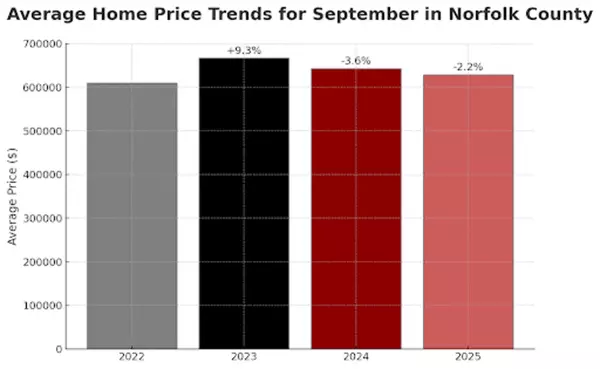Atlantic Canada Commercial Real Estate in 2025: Resilient Fundamentals, Evolving Demand
Commercial real estate (CRE) across Atlantic Canada is facing a more cautious and strategic market in 2025. However, while national challenges, including rising interest rates, softer capital markets, and inflationary pressure, are being felt, this region is remaining stronger than some of the other regions in Canada, according to a Remax 2025 CRE Market Trends Report. Halifax and St. John’s, in particular, are seeing measured activity across key asset classes, supported by local demand drivers, infrastructure investment, and demographic stability. Though deal volume and development activity are below recent peaks, both markets are adapting, shifting toward more cost-conscious tenants, owner-users, and redevelopment strategies.
Halifax: A Market in Transition, Not in Decline
Halifax started 2025 on a multi-year growth cycle. With population gains nearing 50,000 between 2021 and 2024, the city’s housing supply and commercial footprint expanded rapidly. However, growth has since slowed, and economic uncertainties have tempered activity across most CRE sectors.
Industrial Sees a Shift in Demand
Industrial remains Halifax’s most active CRE category, but it has changed significantly. A wave of new supply has pushed availability rates to 12.7% in Q1 2025, up from 7.1% a year ago. Newer buildings are leasing at $17 to $18 per square foot, but many tenants are reluctant to commit at those rates. Instead, demand is shifting to older, more affordable B- and C-class assets, where rents are at least 25% lower.
Industrial spaces in established hubs, especially larger ones that are 10,000 sq. ft. and larger, are seeing strong uptake, though supply remains tight. This demand shift highlights growing tenant price sensitivity and a broader focus on operational efficiency over new construction.
Multi-Family Development Slows
After a record 4,100 multi-family starts in 2023, bolstered by the federal Housing Accelerator Fund, Halifax’s apartment pipeline has begun to taper. RE/MAX notes that while construction remained strong through last year, some developers are now pausing or scaling back amid shifting demand dynamics.
With in-migration easing and affordability slightly improving, the pace of lease-up activity has slowed, even with incentives offered by some landlords. Still, long-term fundamentals remain solid: population growth continues, albeit more modestly, and ongoing demand from students and newcomers supports rental stability.
Local Retail Resilience
Downtown retail is finding balance through rising tourism and a growing wave of local entrepreneurs. While the expansion of multinational retailers has paused, local operators are taking their place, particularly in food service, hospitality, and light industrial-adjacent sectors.
Altus Group’s Q1 2025 Investment Trends Survey ranks Halifax among Canada’s top three markets for food-anchored strip plazas, multi-tenant industrial, and suburban multi-unit residential, suggesting investor interest in stable, necessity-based assets.
Office Sector Repositions Through Adaptive Reuse
Halifax’s office market is outperforming national norms. Availability has dropped to 8.3% in Q1 2025, down from 14.1% a year ago. Much of this improvement is due to conversion projects and a rise in demand from non-profits repurposing space into student and senior housing.
B- and C-class office assets are leading activity, with landlords exploring repositioning options over full redevelopment. As construction costs remain high, retrofitting existing stock offers a practical way to meet shifting demand without overextending capital.
Newfoundland and Labrador: Industrial Growth, Institutional Momentum
Newfoundland and Labrador’s economy is on solid footing in 2025, with strong GDP growth driven by oil production, manufacturing, and a growing pipeline of resource and infrastructure projects. This strength is beginning to translate into broader CRE activity, particularly in St. John’s.
Strong Industrial Demand, Limited Supply
Industrial is the most in-demand asset class, with cap rates ranging from 7% to 8%. Demand is primarily driven by owner-users seeking 2,000 to 3,000 sq. ft. flex spaces with small office and warehousing components. Rents for existing assets remain affordable at $12 to $16 per square foot, while newer spaces lease for $21 to $22, placing pressure on tenants to opt for older buildings.
Office Still Faces Vacancy, But Leasing Picks Up
The downtown St. John’s office market continues to face elevated vacancy, over 20% across all classes, with 3.3 million sq. ft. available, but selective leasing is improving conditions. Landlords are offering incentives, and tenants are taking advantage of favourable terms to upgrade space or consolidate operations.
Retail and Residential Drive Local Activity
Retail remains healthy in St. John’s, especially in major hubs. Tourism and local businesses are helping support brick-and-mortar retail sites, bucking trends seen elsewhere.
On the residential side, institutional capital is entering the multi-family market. REITs are acquiring large rental portfolios, while government grants are supporting affordable and non-profit rental development. With strong demand and stable rental performance, the sector is becoming more attractive to long-term investors.
Mega-Projects Support Future CRE Growth
A new energy partnership between Newfoundland and Quebec is projected to generate $225 billion in revenue. This agreement, alongside major mining, energy, and infrastructure initiatives, sets the stage for long-term economic momentum.
CRE activity is already responding: new building construction investment hit over $34 million in March 2025, up 30% year-over-year, according to Statistics Canada. As these mega-projects advance, demand is expected to increase across industrial, retail, and housing.
Recent Posts











